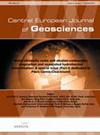The climatic wind energy potential — present and future: GIS-analysis in the region of Freiburg im Breisgau based on observed data and Regional Climate Models
引用次数: 4
Abstract
The current and future wind energy potentials for two square areas (SA) in the region of Freiburg were assessed and analyzed, with the aim of mitigating climate change by increasing the use of wind energy. For future conditions the regional climate models REMO and CLM were taken into account for the IPCC Emission Scenarios (SRES) A1B and B1. One aim was to provide information of the applicability of data from regional climate models in terms of wind energy. As a reference dataset, the wind energy potentials of the two measurement stations of the German Weather Service (DWD) (1961–1990) in Freiburg (SA I) and on the Feldberg (SA II) were assessed. Calculations were carried out by the Wind Analysis and Application Program (WAsP). Results were in terms of visual analysis displayed with maps.While the annual electricity performances of the reference data in SA I and SA II reach up to 7.2 GWh and 10.1 GWh respectively, the calculations for REMO and CLM show an underestimation of the real conditions for every period and Emission Scenario. Hence the applicability of the models in consideration seems to be limited. Nevertheless, with regard to different socio-economic developments (SRES A1B and B1), the results provide an overview of the wind energy potentials’ development in the different periods.气候风能潜力——现在和未来:基于观测数据和区域气候模式的弗莱堡布雷斯高地区的gis分析
为了通过增加风能的使用来缓解气候变化,对弗赖堡地区两个正方形区域(SA)当前和未来的风能潜力进行了评估和分析。在未来条件下,对IPCC排放情景(SRES) A1B和B1考虑了区域气候模式REMO和CLM。目的之一是提供关于区域气候模式数据在风能方面的适用性的资料。作为参考数据集,对德国气象局(DWD)在Freiburg (SA I)和Feldberg (SA II)的两个测量站(1961-1990)的风能潜力进行了评估。计算由风分析和应用程序(WAsP)进行。结果以可视化分析的方式与地图一起显示。虽然sai和saii参考数据的年电力性能分别达到7.2 GWh和10.1 GWh,但REMO和CLM的计算显示出对每个时期和排放情景的真实情况的低估。因此所考虑的模型的适用性似乎是有限的。然而,考虑到不同的社会经济发展(SRES A1B和B1),结果提供了不同时期风能潜力发展的概述。
本文章由计算机程序翻译,如有差异,请以英文原文为准。
求助全文
约1分钟内获得全文
求助全文
来源期刊

Central European Journal of Geosciences
GEOSCIENCES, MULTIDISCIPLINARY-
自引率
0.00%
发文量
0
审稿时长
>12 weeks
 求助内容:
求助内容: 应助结果提醒方式:
应助结果提醒方式:


